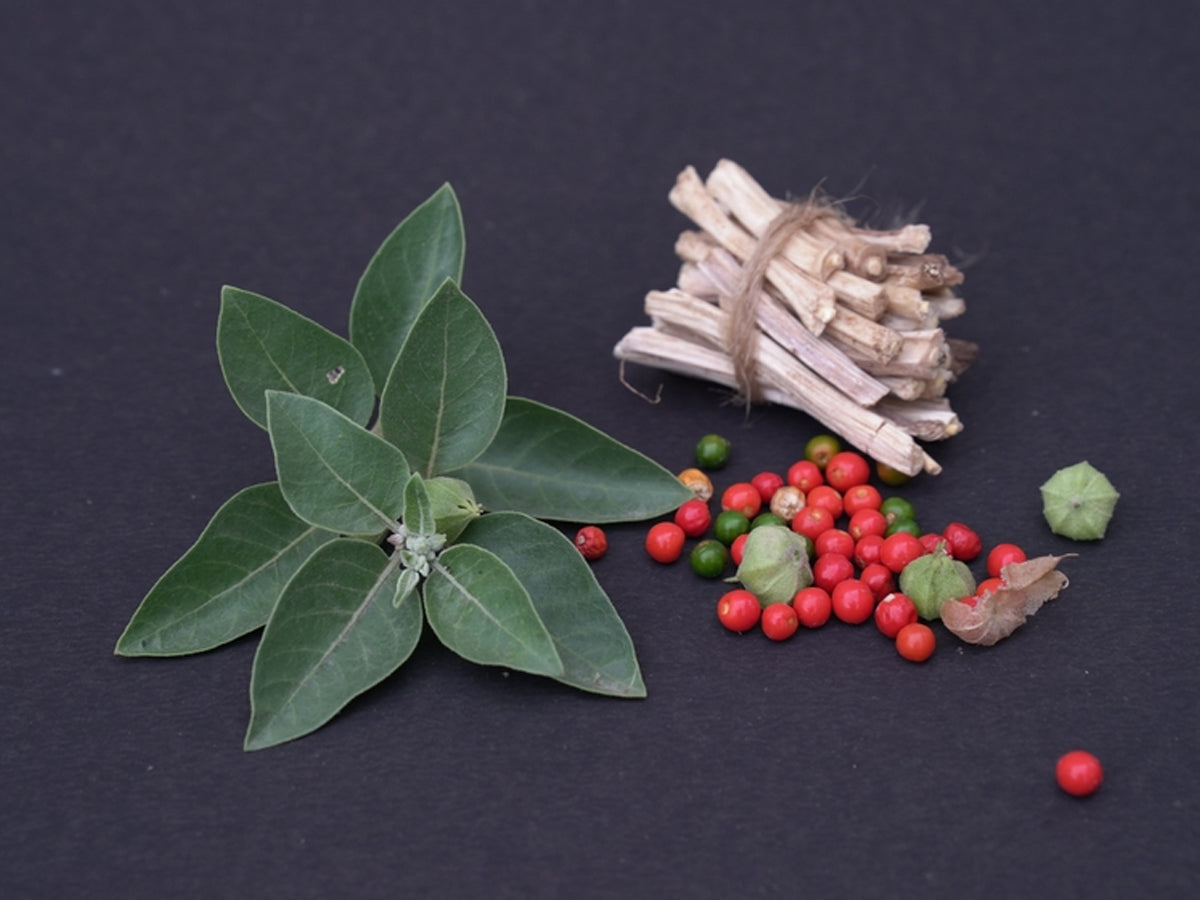How to Grow
Healthy & Powerful Herbs in the World You Should Add to Your Diet
They can boost immunity, give you gorgeous hair and flawless skin, reduce cold-related diseases, and also enhance the taste of your food.
Moreover, the essential oils derived from them can eliminate all signs of stress and uplift your mood.
They are none other than herbs!
Don’t judge these herbal plants by their size; they may look delicate and feeble, but they are far more potent than you might think.
Do you know the best part?
There is nothing fancy about them. You can grow herbs in your home—indoors and outdoors—by adhering to their bare minimum requirements.
In this blog, we will go into greater detail about herbs and why you need to incorporate them into your diet. We will talk about the following: -
- What are herbs?
- Reasons why herbs are important for your diet?
- Types of Indian Herbs to add to your diet
- Useful tips for cooking with herbs
Excited to know more about these fragrant herbs? Let’s get started.
What are Herbs?
General Definition
Herbs are an indispensable part of human culture and cuisine, used for their medicinal, aromatic, and culinary properties. These are plants that produce leaves, flowers, and seeds, which are typically used fresh or dried to add flavor to food or make teas, tinctures, and essential oils.
Botanical Definition
Herbs are seed-bearing plants, particularly flowering plants, that die to the ground every year. These herbal plants typically have a single, long-stemmed, and small seedling leaf structure, unlike trees, plants, and shrubs, which have a more robust, woody structure and a longer lifespan. Herbs have soft stems and a shorter life span.
Culinary Definition
Any green or leafy portion of a plant that is used to season and flavor food but isn't the main ingredient is referred to as an herb. So, you may ask if most of our saag like spinach or green salad like lettuce is an herb? No, because they are consumed as standalone foods rather than just as flavor enhancers for other dishes.
Difference between Herbs and Spices
Now, many people confuse herbs and spices. Let’s dive in there and clarify that.
Actually, which section of the plant they come from is the key difference between herbs and spices.
Herbs |
Spices |
|
A leaf or other green part of a plant is an herb |
Any additional component of the plant, such as dried bark, roots, berries, seeds, twigs, or other plant matter used to season or flavor food, would be regarded as a spice |
|
Herbs can be used fresh or dried |
Spices are used in their dried conditions |
|
Herbs are more delicate in flavor and constitution than spices, whether they are fresh or dried. |
Spices mostly have a strong flavor which they release gradually while you cook |
|
As herbs have a delicate flavor, you have to use them at the end of cooking |
As spices can endure longer cooking times, they are used at the beginning of the cooking |
A nice example of an herb would be thyme, basil, or rosemary, whose leafy parts we use. On the other hand, a good example of a spice is cinnamon, cardamom, or clove.
Reasons why Herbs are Important for your Diet?
Herbs have been a large part of cuisines across the world. Ayurveda also mentions herbs as medicines and as cooking ingredients. Here are some strong reasons why herbs are important for your diet: -
- Most herbs have protective polyphenols which are plant compounds with potent antioxidant and anti-inflammatory effects.
- Some herbs have anti-bacterial and anti-cancer properties, which can contribute to overall health and wellness.
- Herbs have the power to increase your immunity.
- They can be a good source of vitamins, minerals, and antioxidants, contributing to a balanced diet.
- Herbs are often low in calories, making them a great way to add flavor and nutrients to your diet without any guilt.
- Some experts say that incorporating herbs into your cooking can help reduce the need for excessive salt, sugar, and fat, which can be harmful to your health.
Types of Indian Herbs to add to your Diet
Check the list of Indian herbs that you can include in your diet for overall well-being. These types of herbs can be easily grown at home or are available readily in the market.
Tulsi or Basil
In ancient times, it was mandatory to have a Tulsi plant at home. This plant is worshipped twice a day in many households because of its magical medicinal properties that can erase diseases. Recent studies say that it may also have anti-cancer properties. The simplest and easiest way to have it is in tea or by dipping the leaves in honey and chewing them.
Benefits
- Tulsi is an adaptogen that helps the human body relieve stress and anxiety.
- Rich in zinc and vitamin C, Tulsi can boost your immunity with regular intake.
- Camphene, cineole, and eugenol in Tulsi help reduce colds, coughs, fevers, and respiratory issues.
Care Tips
- A light, airy, and rich soil like silty loam with a pH between 6.0 and 7.5 is great for growing tulsi.
- Four to six hours of bright sunlight is necessary for a healthy Tulsi plant although some shade is also welcome.
- Keep the soil moist but not soggy.
Coriander
Most of our food items, like lentils, vegetable curries, or dips require coriander to add a nice flavor. Pluck a handful of coriander leaves, wash them thoroughly, and finely chop them before adding them to any dish. Dhania patti is a magical herb for enhancing the flavor of everything from sandwiches to salads, eggs to biryanis.
Benefits
- With 24mg and 635mg of vitamin C and vitamin A, coriander is a natural immunity booster.
- Coriander leaves absorb extra sodium, reducing blood pressure and cholesterol levels, thus promoting heart health.
- As coriander leaves contain a good amount of fiber, they can improve gut health and reduce digestive issues.
Care Tips
- One inch of water every week is sufficient for this herb.
- Coriander doesn’t enjoy long, continuous sunlight but appreciates bright, indirect light.
- The soil for coriander herb should be light, and airy, with a pH between 6.2 and 6.8.
Curry leaves
One of the most popular herbs used to season many dishes in India, curry leaves are known for their unique fragrance. Ayurveda says curry leaves can put an end to all your stomach-related issues. It grows fast and requires minimal care, so you can grow it anywhere in your home.
Benefits
- Kadi patta or curry leaves can help you lose weight because it is a detoxifier that aids in flushing out toxins and preventing fat build-up
- This magical herb can promote hair growth, stop hair fall, and graying
- Consumption of curry leaves helps prevent oxidative damage, reduce cholesterol, and lower triglycerides, thus reducing all risk factors for heart disease.
Care Tips
- Red sandy loam soil with a pH between 5.6 and 6.0 is important to grow curry leaf plants.
- This herb needs water every two to three days in summer and once a week in winter.
- Being a tropical plant, curry leaves love the sun and require six to eight hours of daily sunlight.
Methi or Fenugreek
The seeds of methi, or fenugreek, are used as a spice. The leaves are directly used as a main ingredient in food or along with spinach and potatoes. Methi leaves are also dried and used as an herb ingredient in foods to add a delicate yet unforgettable flavor. These dried leaves of methi are known as kasuri methi.
Benefits
- Antioxidants in methi help reduce gastrointestinal problems and improve digestion.
- Methi is believed to increase HDL (good cholesterol) and reduce LDL (bad cholesterol).
- Kasuri methi also prevents skin diseases and respiratory problems.
Care Tips
- Methi requires loamy and sandy, well-draining soil with a pH between 6.0 and 7.0.
- It is essential to provide four to six hours of daily sunlight.
- Water regularly after the soil dries up.
Mint
The mint herb has numerous applications ranging from food to beverages to cosmetics to medicine. You can use it to make dips or chutneys to serve with flatbreads or rice. You can simply put it in your tea to make it more flavorful. Mint is one of the easiest-growing herb plants that you can place in your kitchen window or balcony.
Benefits
- Mint prevents chronic illnesses that usually start with asthma or a cold.
- Most mouthwashes contain mint not only for flavor but also for germicidal properties that prevent bacterial growth in the mouth.
- Having mint water regularly creates more digestive enzymes aiding better digestion.
Care Tips
- Afternoon sunlight is harsh and harmful to mint, but it enjoys six hours of the morning sun.
- Slightly damp soil is ideal for growing mint, and you can mist the plant between watering sessions.
- Peppermint requires a soil with pH between 6.0 and 7.5. Organically rich, deep soil with a granular texture is best for mint.
Rosemary
Rosemary is a member of the sage family Lamiaceae whose leaves are used to flavor a variety of food items like roast chicken, potatoes, garlic bread, mushroom salad, etc. Its aroma intensifies the taste of soups, salads, and stews.
Benefits
- Rosemary is a rich source of manganese, that aids in blood clotting, speeding up the healing process.
- Consuming rosemary tea may help lower blood sugar levels. That’s because this tea contains substances that act similarly to insulin and increase the uptake of glucose into muscle cells.
- The lovely aroma of rosemary can improve mood, calm the mind, and reduce stress.
Care Tips
- Rosemary loves to bathe in the sun and dislikes shade. So, a minimum of six hours of sunlight is necessary for the proper growth of rosemary.
- Select a well-draining loamy or sandy soil with a pH of 6.0 to 7.0.
- Let the top few inches of soil dry out every time before watering. Water evenly without flooding the soil.
Useful Tips for Cooking with Herbs
- Compared to fresh herbs, dried herbs have stronger flavors. Generally speaking, one teaspoon of dried herbs is equal to four teaspoons of fresh herbs.
- Remember that savory herbs lose their taste and subtle fragrance after prolonged cooking.
- In combination, never highlight more than one of the potent plants. Only people with sophisticated palates should be able to tell which herbs are used in the blends.
- The ideal method for blending herbs is to heat them in unsalted butter or other cooking oils, which enhances and prolongs the flavor of the aromatic oils.
- After a year, dry herbs should be thrown away since their flavor starts to deteriorate.
- Do you know that whole herbs, whose stalks are intact with the leaves, have a stronger flavor than the loose ones available in packets or jars?
Do you have any of these essential herbs at home? If not, think about growing them now. Don’t worry if you haven’t ever been a plant parent because these happy herbs demand less of your time. With their essential nutrients, they will keep you healthy. So, start your herb garden today!
FAQs Related to Medicinal Herbs
Can you define "herb" in simple terms?
In simple terms, herbs are plants with green and tender stems, a short life span, and short branches present uniformly throughout the stem. They are used fresh or dried in various dishes like coriander, mint, or curry leaves.
Which herb is known as the “king of herbs?”
Basil or Tulsi is known as the “king of herbs” because of its medicinal properties that can cure fever, cold, cough, asthma, malaria, dysentery, skin diseases, etc.
Is rosemary an Indian herb?
Rosemary is known as "Rujamari" in Ayurveda, which is native to the Mediterranean region.
Which are the easiest herbs to grow indoors?
Most herbs can be grown at home easily because they require the bare minimum care. You can grow coriander, curry leaves, mint, sage, basil, etc. indoors.
Which herbs can be used in tea?
You can use herbs like mint, chamomile, rosemary, basil, or lemongrass in tea.



